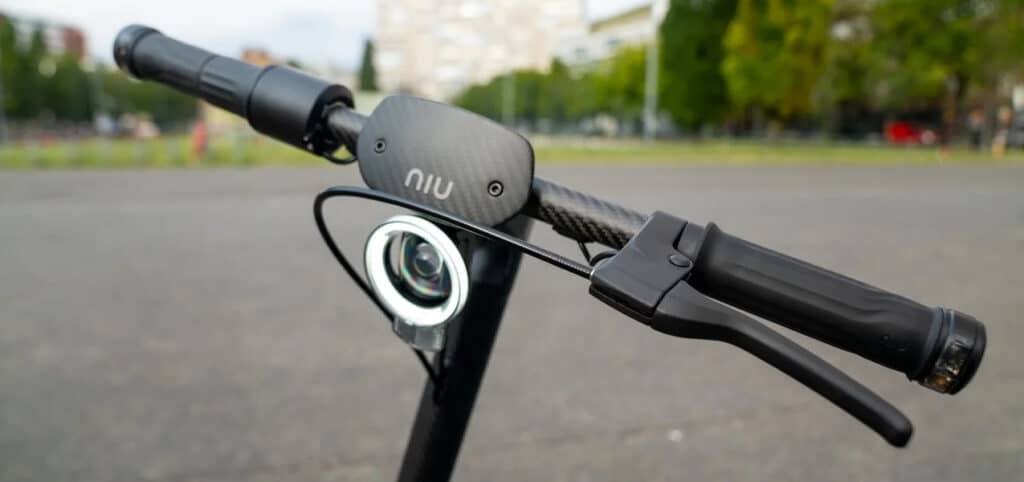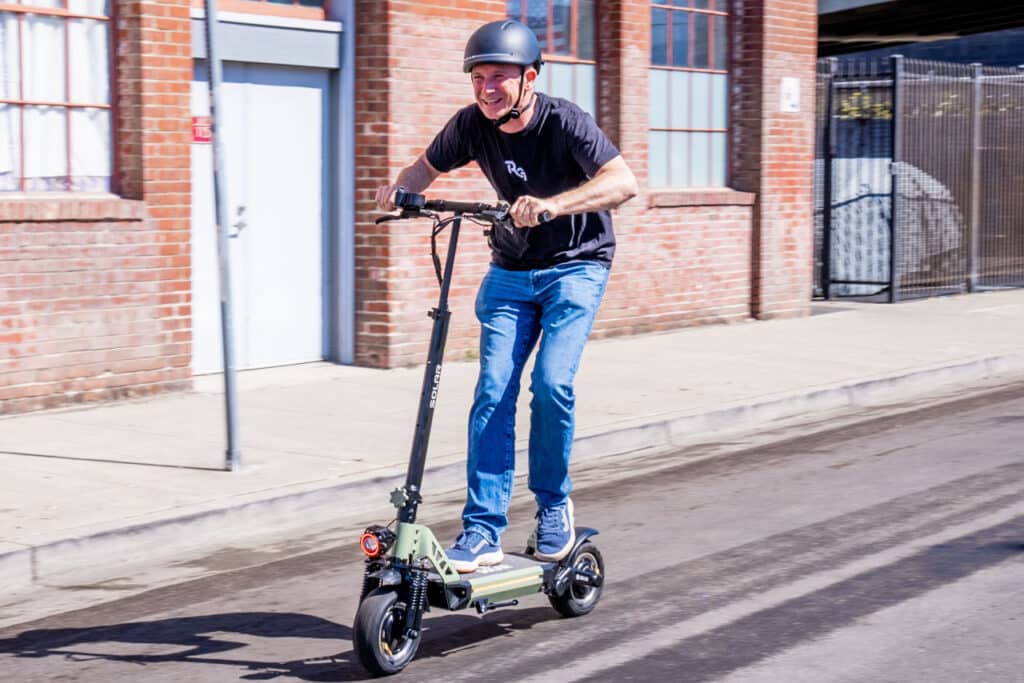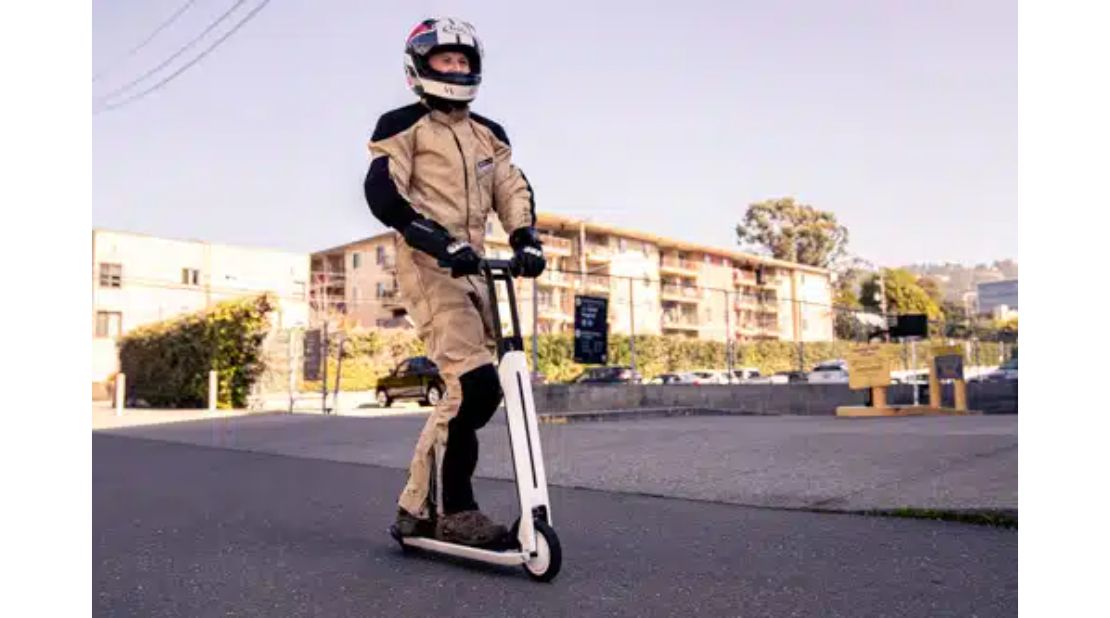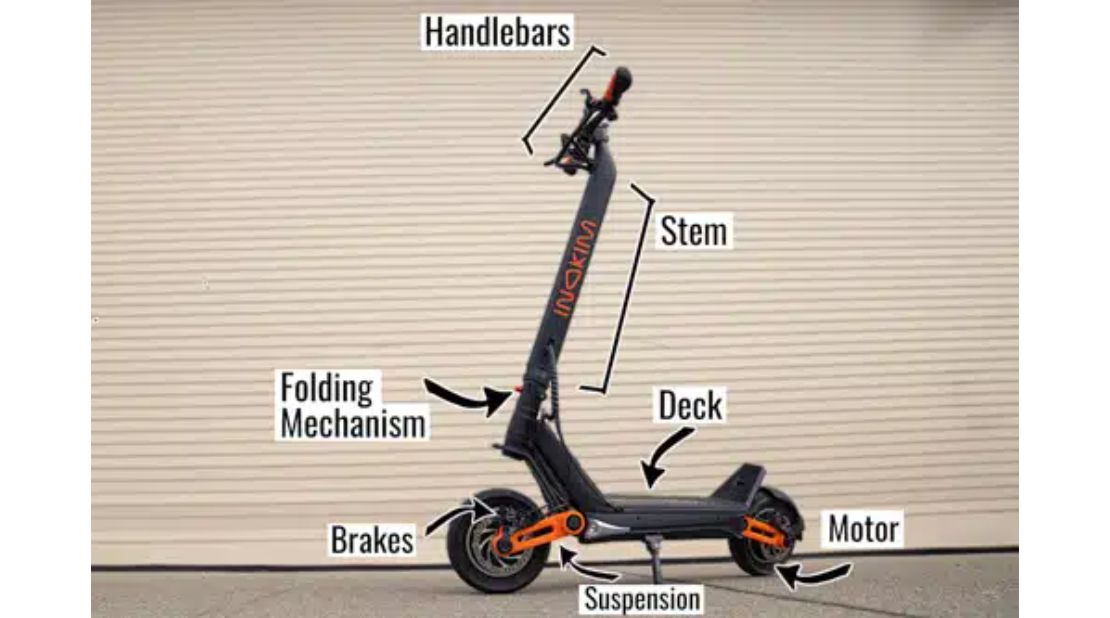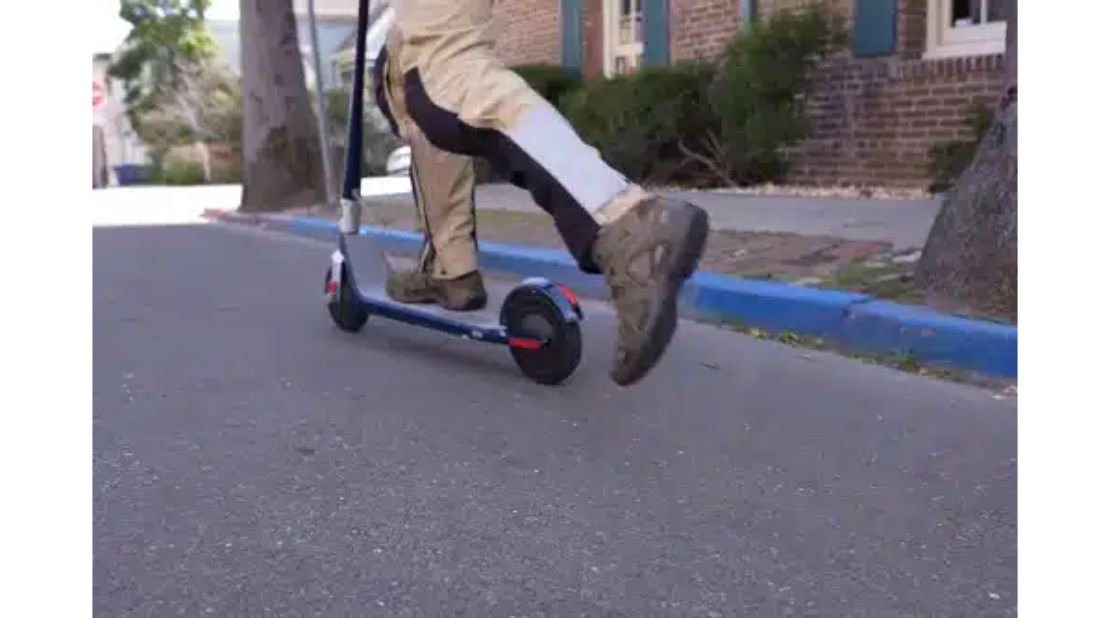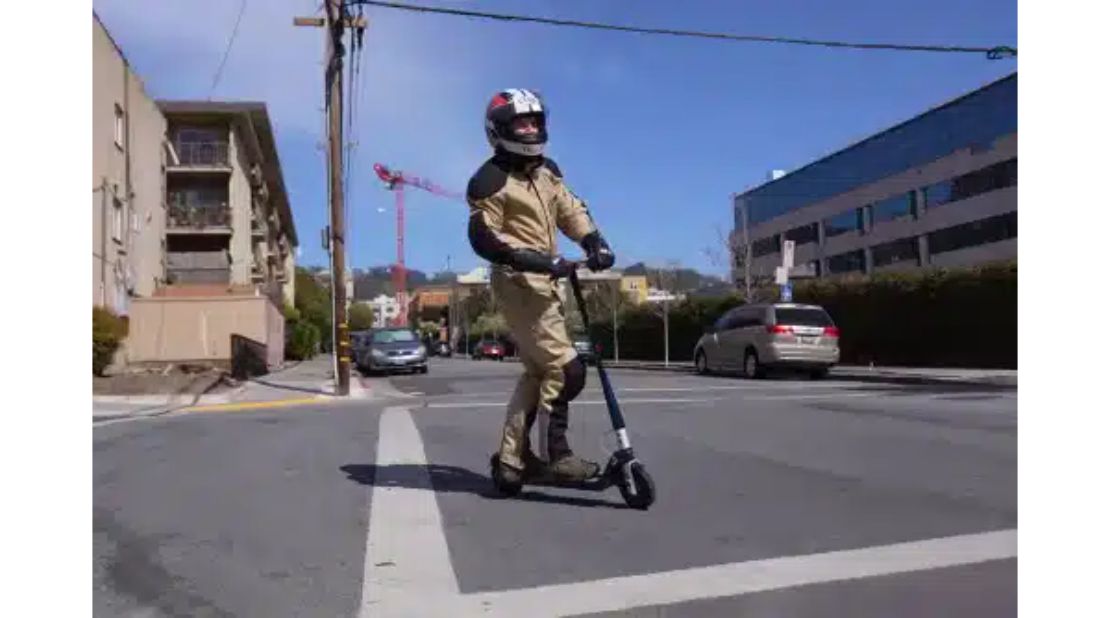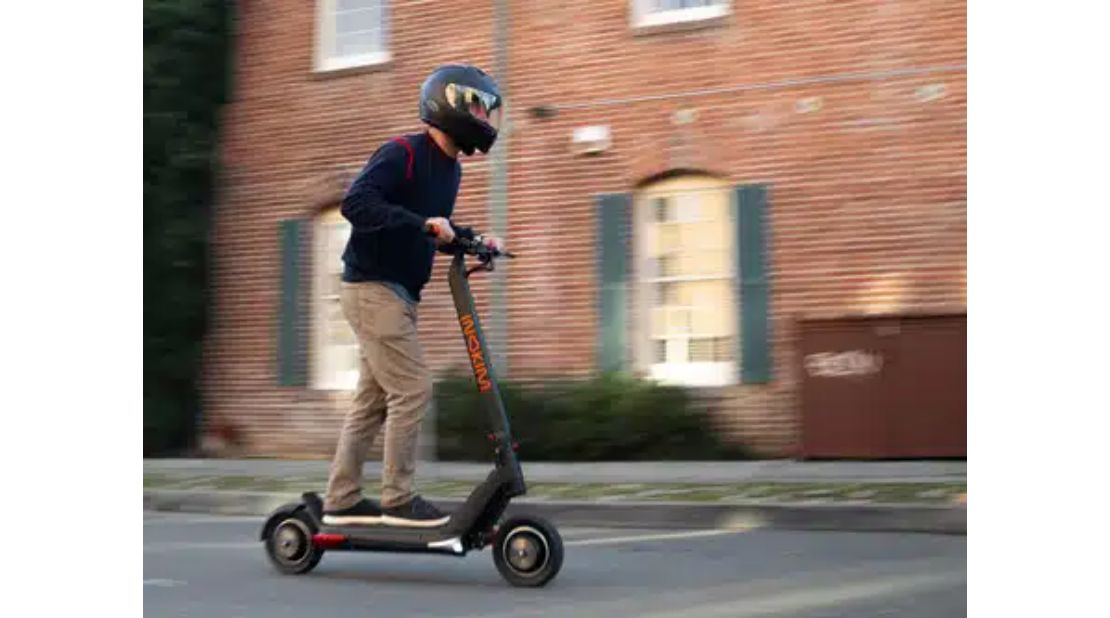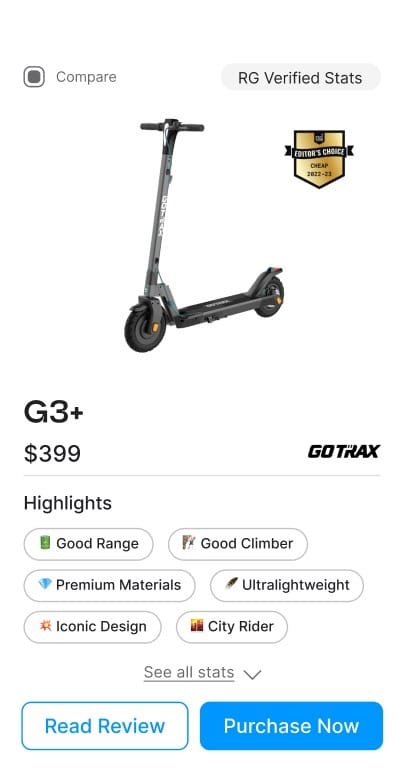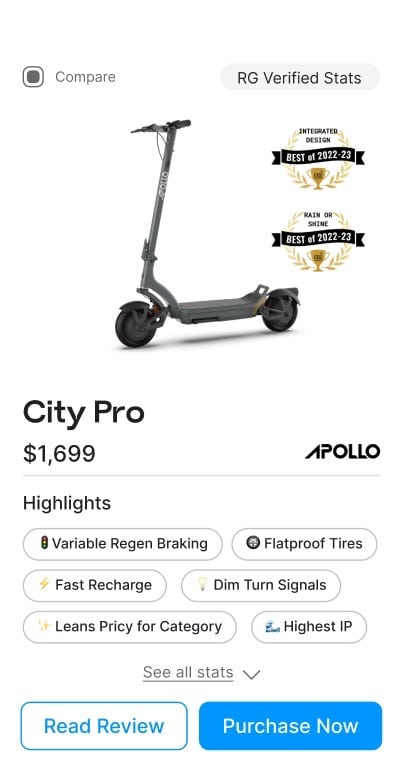How to Ride an Electric Scooter
Riding an electric scooter is easier than a bicycle and most people can pick it up right away. This guide will help get you started and covers important tips on how to ride plus the most overlooked insights from our team.
Wear protective gear appropriate for your trip and riding style
Before you hop on your scooter, you need to be wearing appropriate gear.
First and foremost, you should always wear a helmet when you ride, no matter how short the trip or how fast you are riding. An CPSC-certified bike helmet is the minimum, but you may want something more protective for higher speeds.
Learn more in our helmet guide.
Your gear and clothing should always match the speeds and type of trip you are taking. More speed = more gear.
For higher speeds or if riding on the road in traffic, you’ll want to add long-leg pants, gloves, long-sleeved shirt, and closed-toe shoes.
You can also add in even more protective gear, including elbow and knee pads or possibly a full racing suit. For most riders these will be overkill.
Make sure you are familiar with your scooter and its controls
Before riding, it’s important to familiarize yourself with your scooter. Make sure you know where the accelerator, brakes, lights and horn are.
If you just received you scooter, it’s best to take it to a protected outside area, like a parking lot, and make sure you have a sense of how the throttle feels and brakes work.
If you want to be really cautious, you can test out your scooter without even powering it on by using it as a standard kick scooter. This can give you a good sense of the balance, steering and brake feel.
Finally, make sure you understand how the folding mechanisms on your scooter work. Depending on what scooter you own, you will probably have a folding stem and possibly folding handlebars. Make sure you know how to lock both into place. There are many mechanisms and some have extra safety features that must be engaged to prevent it from folding while riding.
Some mechanisms will have an audible click when properly seated while others do not. Read your instruction manual and make sure you understand how it works.
Do a pre-flight check of your scooter before hopping on
The first time and every time you ride, do a pre-flight check to make sure your scooter is good to go.
a. Tires are in good condition and inflated to correct pressure
b. Folding mechanisms locked into place
c. Brakes properly adjusted
d. Scooter looks and sounds good (no weird noises, obvious damage, anything changed or unusual)
e. Battery charged enough for your trip
f. Gear bag for longer rides (tire slime, pump, multi-tool)
g. Mobile phone for emergencies
Launch your scooter by kicking off from the ground
Launching your scooter and starting to ride is as simple as putting one foot on the deck, kicking off and pushing down on the accelerator.
You’ll typically have to get the scooter up to ~3 mph for the motor to engage, though scooters with zero start don’t require kicking off.
Before you launch, you’ll want to make sure the kickstand is up.
If it’s your first time on the scooter, you may want to adopt a conventional stance which is having one foot — typically the non-dominant — in front of the other. If you do it with your dominant in front, this is called goofy stance.
Some people prefer to ride with their feet side-by-side … and it does work, however you’ll be a bit less stable and unable to shift your weight appropriately to balance. If you have an emergency, you won’t be able to react as quickly when riding like this.
Turn by steering at lower speeds and rely on leaning at higher speeds
When riding your scooter, use your handlebars to help you balance, but your feet and legs should be doing most the work. If you notice that you’re pushing or pulling really hard on the handlebars, this is not a good sign and means you need to work on your balance.
The handlebars are on the end of a very long lever arm and even the best built scooter is not designed for the rider to frequently crank on the handlebars.
At very, very low speeds, you’ll actively use the handlebars to steer your scooter. You will also have to engage your core and adjust your weight to maintain balance. At normal riding speeds >5 mph you should keep the handlebars mostly straight and rely on weight shift and leaning to maneuver and turn.
Shift your weight back and down when braking hard
When braking hard, bend your knees and shift your weight back over your rear leg — as though you are about to sit down. Most of the braking power comes from the front brake, so be sure to use both.
Braking hard while turning, is much more likely to cause a crash than braking hard in a straight line, so whenever possible, straighten up before executing an emergency stop.
For maximum braking power, you’ll want to be right on the verge of skidding the rear tire, without “locking” the brake. The front wheel is very unlikely to skid, but grabbing way too much front brake does have the potential to send you over the handlebars, especially when riding scooters with more powerful front brakes (such as disc brakes).
Spend some time practicing using the front brake, adding more and more front brake as you get comfortable with it.
Accelerate using the throttle and position yourself for stability
Accelerating by squeezing down on your throttle control. If you are accelerating hard on a more powerful scooter, double check that your feet are in a stable position and bend your knees to lower your center of gravity.
Use the handlebars for stability, but avoid over stressing them. Your legs should be providing the majority of your balance.
Pro Tip: When accelerating hard, plant your weight on your rear foot and use that foot to help your body lean forward. This will keep you from pulling on the handlebars.
If you’re riding a dual motor scooter, it will also help keep the front wheel from losing traction while accelerating.
Advanced Riding Techniques
As you are learning how to ride your scooter and venturing onto public roads, there are a few advanced techniques you’ll want to have in your back pocket.
Look Ahead to Avoid Obstacles
First and foremost, learn and use obstacle avoidance. Scooters all have relatively small tires and potholes and other road debris present a hazard.
Always pay attention to the road surface and be aware of surrounding vehicles. Practice and be confident to make quick but controlled avoidance movements. The most important thing is to not overcorrect or swerve into another vehicle.
Sometimes obstacles are unavoidable and you must go through or over them. The biggest concern is having your front wheel stop, which will send you over the handlebars.
Roll over Obstacles Perpendicularly
To roll over an obstacle, practice shifting your weight over the rear wheel and hopping the front wheel over the obstacle by slightly tugging on the handlebars.
You’re not trying to gain serious air with the front wheel and when done properly, the front may not leave the ground. The goal here is to unweight the front wheel and make it as easy as possible for it to clear the obstacle.
Maximize Range with These Tips
How do you maximize your range on your scooter? It’s simple — use as little energy as possible, by following these tips:
1. Always kick start your scooter. The motor uses the most power when it’s putting out the most torque — which is when you are first starting the scooter.
2. Accelerate slowly. Faster acceleration = more torque = more energy consumed.
3. Keep your top speed down. Higher top speed = more wind resistance = more torque = more energy consumed.
4. Inflate tires to proper pressure. Make sure to keep your tires inflated to the recommended pressure, which will reduce rolling resistance. Lower pressure will reduce range and increase your risk of flat tires.
5. Ride in warmer weather. You may not be able to control this one, but batteries aren’t able to put out their full charge when they are colder. You’ll notice a very significant drop (temporary) in capacity when operating your battery below 50 F / 20 C.
Will regenerative braking give you more range?
No, maybe a 2 to 3% increase based on our analysis. However, it will prolong the life of your brake pads.
After the Ride
When you arrive at your destination, it’s important to store your scooter securely so that it is there when you get back.
Though the safest option is to always bring your scooter with you and there are often creative ways to do this, sometimes this is not possible.
For locking your scooter in a public place, we recommend only using very high quality U-lock such as the Kryptonite New York series. These locks are expensive and heavy — about and 4.5 lbs but necessary and worth it. Cheaper and lighter locks will not protect your investment.
Slip the U-lock through a secure locking and permanent point that can’t be easily removed with tools. Some examples are: through/around the frame, a permanent carrying handle, through the folding mechanism.
Finally, if your scooter has gotten wet during the ride, give it a quick wipe down (towel or paper towel), and be sure to park it inside, where it has a chance to completely dry off before the next ride.
This is especially important if your scooter does not have an IP rating (water/dust resistance rating).
Summary
Learning to ride an electric scooter is relatively easy, though being able to safely commute in traffic is learned through experience.
If you’re a total beginner, make sure to wear a helmet, practice, and gain confidence before riding in mixed traffic.
Related Reviews

